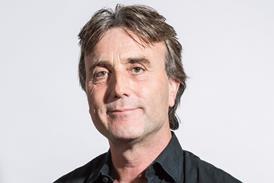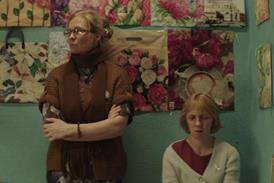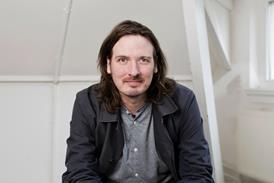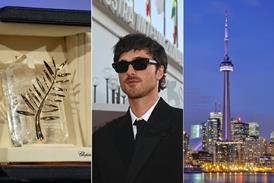Tintin producer Kathleen Kennedy talks about a collaboration between two Oscar-winning directors that involved half a million hours of animation work.
Nearly three decades before the world would see the first collaboration between Oscar winners Steven Spielberg and Peter Jackson, Spielberg and his business partner and now regular producer Kathleen Kennedy were poring over reviews for his global smash Raiders Of The Lost Ark. It was 1983 and they were struck by glowing comparisons by French critics to an unfamiliar but — it turned out — beloved Belgian comic-book character named Tintin.
“Steven had no idea what that was and neither did I,” says Kennedy, who produced the film with both Spielberg and Jackson. “We got hold of the books and we were as delighted as many of the fans had been. We were able to get hold of [Tintin creator] Hergé and we all spoke on the phone. Steven and I were planning to travel to Brussels to meet him but he passed away before we made the trip.”
During their short-lived correspondence, Kennedy says Hergé (whose real name was Georges Remi) and Spielberg developed a mutual appreciation. Hergé came to believe his new friend would be the ideal person to film his adventure stories. But even though the man whose books have sold more than 200 million copies worldwide had given his unofficial endorsement, it would be many years before Spielberg felt the time was right to introduce the fearless young reporter Tintin to the big screen.
‘It’s extraordinary to have two famous directors working together; there could have been friction but it was absolutely the opposite’
Kathleen Kenneday, producer
Spielberg eventually acquired the rights from Hergé’s widow, Fanny (Hergé died in 1983, the same year he met Spielberg). A project was set up at Universal with Amblin Entertainment, the production company Spielberg and Kennedy had founded with Frank Marshall. The project would eventually migrate to DreamWorks in 2003 before landing in late 2008 at Paramount, which will release the film in North America on December 21. A split rights deal has been structured with Sony to carve up international territories. By the end of November, The Adventures Of Tintin: The Secret Of The Unicorn had taken more than $200m internationally.
But back in the early days, Spielberg did not feel it was the right time to proceed. “He was reluctant about a live-action adaptation,” Kennedy confides over the phone from Richmond, Virginia on a break from Spielberg’s Lincoln shoot. “It wasn’t until he started to see the breakthroughs in performance-capture animation that he thought it might be the way to capture what Hergé had done.”
Spielberg had been impressed by Robert Zemeckis’ motion-capture work on The Polar Express in 2004, a fateful year as it turns out because several months earlier he had presented the best director Oscar to Jackson for the final episode of The Lord Of The Rings trilogy. It was the first time Spielberg and Jackson had met and they hit it off instantly, chatting backstage and promising to keep in touch.
Not long after that Spielberg, his mind now buzzing with Tintin possibilities, asked Jackson’s Weta Digital to conjure up a screen test for Tintin’s faithful dog, Snowy. He was thrilled with the digital rendering, and Kennedy recalls the pair embarked immediately on a process of “serious development”. By this time Spielberg knew animation was the way to go. He had seen the next evolution of motion-capture in Zemeckis’ Beowulf in 2007 and Weta Digital was hard at work on James Cameron’s imminent box-office titan Avatar.
“We wanted to make a movie for people who didn’t know Tintin,” Kennedy says. UK writer Steven Moffat penned the first draft and when he became inundated by the demands of the BBC TV series Doctor Who and Sherlock, it opened a door for Moffat’s fellow Brits Edgar Wright and Joe Cornish. “The two of them grew up with Tintin — it was important to Steven and Peter that we hired writers who understood the entire series,” says Kennedy.
The script combines three revered tales from the Hergé oeuvre — The Secret Of The Unicorn, The Crab With The Golden Claws and Red Rackham’s Treasure. Production got underway at Giant Studios near LAX airport in Los Angeles on January 26, 2009. The key cast of Jamie Bell as Tintin, Andy Serkis as his colourful pal Captain Haddock, Daniel Craig as the villain of the piece Sakharine and Nick Frost and Simon Pegg as the hapless police inspectors Thomson and Thompson shot for 31 days on the vast soundstage.
“Andy and Jamie were uniquely suited to be extremely physical,” Kennedy says. “Their faces were very expressive, as were their movements in terms of how they expressed themselves with their whole bodies. Andy [who had acted as Gollum and King Kong for Jackson] was extremely aware of what he was doing, so he became the guru on set.” The actors wore Lycra suits with reflective dots and head rigs with tiny cameras that recorded facial expressions. Around them, hundreds of cameras recorded their movements and created the 3D space.
“It was a huge change for Steven,” Kennedy says. “It was disarming at first for him to walk into a space that didn’t [feel real]. He felt it would be very alienating but he got to hold the camera and find the shots with the actors and he saw everything he was doing was focused around the performances. You can move right into the gist of the scene or go into a performance; it’s like theatre and that became liberating… You so vividly feel Steven’s style as a director in Tintin.”
Every camera fed information into dozens of computers that Kennedy likens to “mission control”, allowing Spielberg to direct the actors in front of him and see their animated selves on the video monitor in real time. Back in New Zealand, Jackson — who only spent one week on set in Los Angeles — would rise early and stay in constant video contact, talking to the actors and conferring with Spielberg.
‘It was a huge change for Steven’
Kathleen Kennedy, producer
“It’s extraordinary to have two famous directors working together; there could have been friction but it was absolutely the opposite,” Kennedy says. “They really, really enjoyed working together and bouncing ideas off each other. One would step in when it got too busy for the other. The hand-offs were seamless and there was no sense of ego.
“As a producer it was a huge challenge because I’d never made a movie like this either, even though off and on we had done a certain amount of animation in the early days of Amblin Entertainment like An American Tail and I had done Persepolis… [It] was tricky trying to have an intuitive sense of how long this process would take. So we started out relatively small and hired a core team and grew from there.
Kennedy declines to reveal the budget but says the cost was “nothing outside of what has become the normal big-budget Hollywood picture”. She will admit that animation allows “something close to a cost-per-minute breakdown, which allows the production to be financially responsible”. Post-production took a couple of years. “It took about four to five hours per frame for the animation and there are about 93 minutes of film there.” At 24 frames per second, this comes to more than 535,000 hours of animation work.
Which of course means the production employed a vast team of animators and computer technicians. “We have this tradition where we toast with champagne when the first frame and the last frame have rolled and we wanted to toast everybody. We had to wait 25 minutes while everybody in New Zealand got into three separate buildings to say goodbye.”
They will build another army in time. Jackson will direct the second Tintin episode, which will introduce the character of Professor Calculus. A script is due in the next few months and, once Jackson has completed the Hobbit films and Spielberg finishes Lincoln, they aim to start by autumn next year and wrap by 2014. “Our plan is to make as many as we can,” Kennedy says. “There are so many books. There’s a tendency to assume people will make a trilogy.” Spielberg for one will be thrilled. “When we finished this film, Steven turned to me and said he was so sad to see this was over.”






















No comments yet